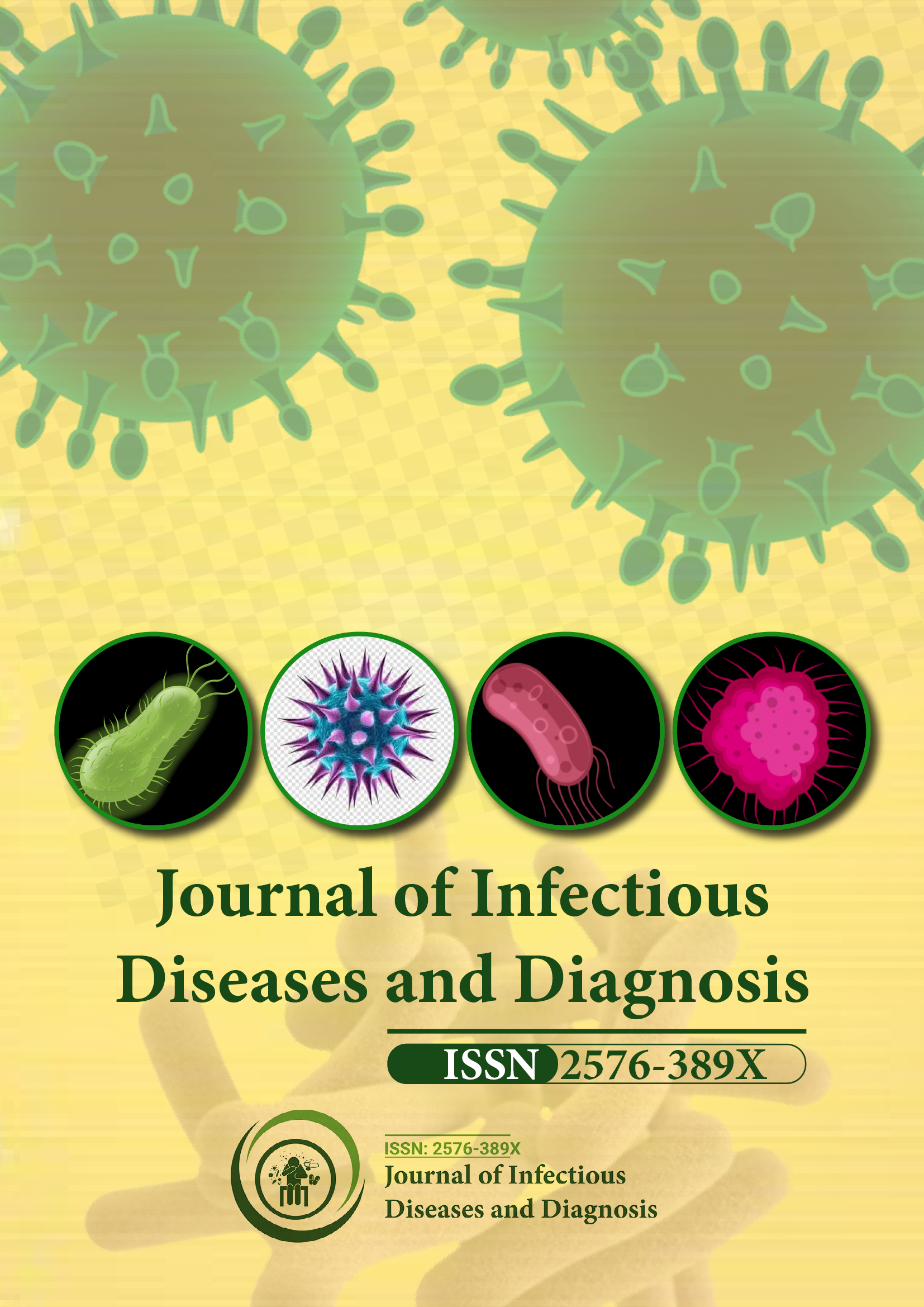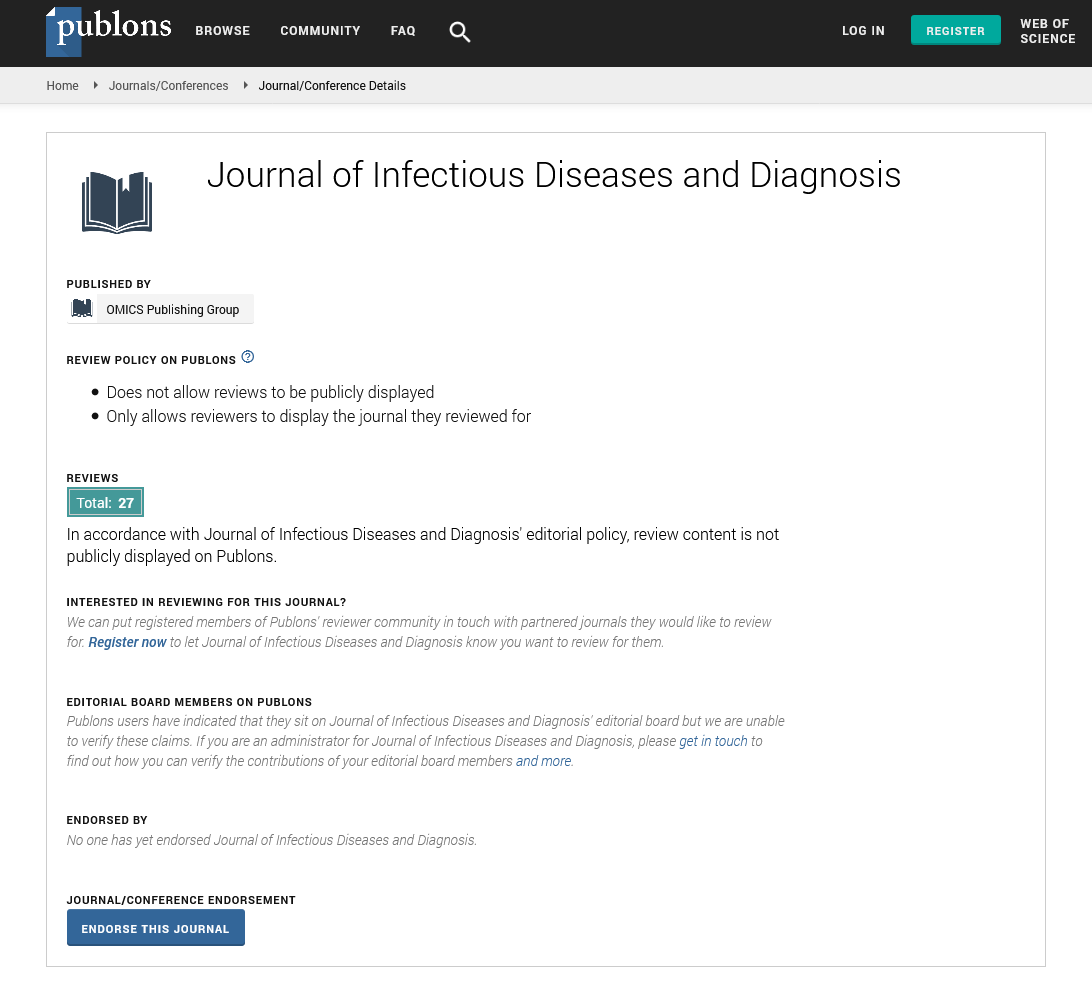Indexed In
- RefSeek
- Hamdard University
- EBSCO A-Z
- Publons
- Euro Pub
- Google Scholar
Useful Links
Share This Page
Journal Flyer

Open Access Journals
- Agri and Aquaculture
- Biochemistry
- Bioinformatics & Systems Biology
- Business & Management
- Chemistry
- Clinical Sciences
- Engineering
- Food & Nutrition
- General Science
- Genetics & Molecular Biology
- Immunology & Microbiology
- Medical Sciences
- Neuroscience & Psychology
- Nursing & Health Care
- Pharmaceutical Sciences
Opinion Article - (2025) Volume 10, Issue 3
Zoonotic Spillover: A Cross-Sectional Study of Livestock Handlers Exposed to Brucella and Coxiella burnetii
Quinn Hue*Received: 30-Apr-2025, Manuscript No. JIDD-25-29300; Editor assigned: 02-May-2025, Pre QC No. JIDD-25-29300 (PQ); Reviewed: 16-May-2025, QC No. JIDD-25-29300; Revised: 23-May-2025, Manuscript No. JIDD-25-29300 (R); Published: 30-May-2025, DOI: 10.35248/2576-389X.25.10.335
Description
Zoonotic infections represent a persistent and often overlooked risk for individuals in close contact with animals, especially in regions with extensive livestock farming. Brucellosis and Q fever, caused by Brucella spp. and Coxiella burnetii respectively, are two important zoonotic diseases known to cause fever, malaise and long-term complications in humans. Both are transmitted primarily through direct contact with infected animals, consumption of unpasteurized dairy products, or inhalation of contaminated aerosols. Occupational groups such as livestock handlers, dairy workers, veterinarians and abattoir employees are particularly susceptible. Despite the public health relevance, these diseases are often underdiagnosed due to non-specific symptoms and limited diagnostic resources. This study aimed to assess the seroprevalence of Brucella and C. burnetii exposure among livestock handlers and identify associated behavioral and environmental risk factors.
The cross-sectional study was conducted in three districts with high livestock density and reported cases of animal abortions. A total of 740 livestock handlers, including farmers, herders and workers at dairy farms and slaughterhouses, were enrolled. Participants were selected using stratified random sampling to ensure representation across different types of animal contact and occupational roles. After obtaining informed consent, participants completed a detailed questionnaire covering personal demographics, occupational practices, protective measures, exposure to animal births or abortions and consumption habits.
Blood samples were collected from each participant and analyzed for the presence of IgG antibodies against Brucella and Coxiella burnetii using standard ELISA kits validated for human serosurveillance. Additional data on the presence of these pathogens in livestock within the same regions were obtained through parallel veterinary records and animal sample testing, which was conducted by the regional animal health authority.
Among the 740 participants, 123 (16.6%) tested positive for antibodies against Brucella and 89 (12%) were positive for C. burnetii. Co-exposure was observed in 32 individuals (4.3%). Seroprevalence was significantly higher among individuals involved in calving, milking and the handling of aborted materials. Those working in slaughterhouses or veterinary roles had a higher rate of C. burnetii seropositivity, likely due to aerosol exposure during processing and necropsies. Male participants aged 30–50 had the highest risk, correlating with their higher participation in high-contact livestock roles. Environmental conditions further contributed to transmission risk. In farms where livestock shared close quarters with human living spaces and where animal waste disposal was irregular, the risk of seropositivity was markedly higher. Inadequate ventilation in animal sheds and enclosed milking areas was also associated with increased antibody detection, particularly for C. burnetii, which can be transmitted through airborne particles that remain viable for long periods.
Interestingly, many seropositive individuals reported a history of chronic, undiagnosed fever, joint pain, or fatigue in the past year, yet had not sought medical attention or had been misdiagnosed with other conditions such as typhoid or viral fevers. This reflects the diagnostic challenges posed by these diseases in rural and periurban healthcare settings, where laboratory access is limited and clinical awareness is low. Knowledge and awareness levels about zoonotic infections were poor among the study population. Only 15% had heard of brucellosis and even fewer were aware of Q fever. The lack of information campaigns targeting these occupational groups has likely contributed to low perception of risk and limited preventive behavior. Veterinary workers and farm supervisors were slightly more informed but reported challenges in enforcing biosecurity protocols among their teams due to cultural norms and resource constraints.
Data from concurrent animal testing showed that approximately 18% of cattle and goats tested in the study zones were seropositive for Brucella and 10% for C. burnetii. This correlation between animal and human seropositivity strengthens the evidence of direct zoonotic spillover and emphasizes the need for joint surveillance strategies. Coordinated efforts between human and animal health sectors are essential to identify and address points of cross-species transmission effectively.
This study underlines the occupational vulnerability of livestock handlers to brucellosis and Q fever. The high seroprevalence among individuals with frequent animal contact, particularly in the absence of personal protection and proper hygiene practices, signals a pressing need for intervention. Improved access to diagnostics, awareness campaigns, vaccination of livestock and structured training for handlers can reduce disease burden. Furthermore, implementation of simple yet effective measures, such as protective clothing, safe waste disposal and pasteurization of milk, can significantly lower exposure risks.
In conclusion, the findings demonstrate clear evidence of zoonotic exposure to Brucella and Coxiella burnetii among livestock handlers, with practices, environment and awareness levels contributing to infection risk. The overlap of human and animal living spaces, lack of personal protection and inadequate knowledge about disease prevention create a setting conducive to pathogen spillover. Public health responses should prioritize educational outreach, support for protective measures and integrated disease surveillance systems that include both human and animal health data. Addressing these gaps through targeted community and occupational interventions will reduce the likelihood of unrecognized transmission and protect the health of frontline rural populations engaged in livestock management.
Citation: Hue Q (2025). Zoonotic Spillover: A Cross-Sectional Study of Livestock Handlers Exposed to Brucella and Coxiella burnetii. J Infect Dis Diagn. 10:335.
Copyright: © 2025 Hue Q. This is an open-access article distributed under the terms of the Creative Commons Attribution License, which permits unrestricted use, distribution, and reproduction in any medium, provided the original author and source are credited.

